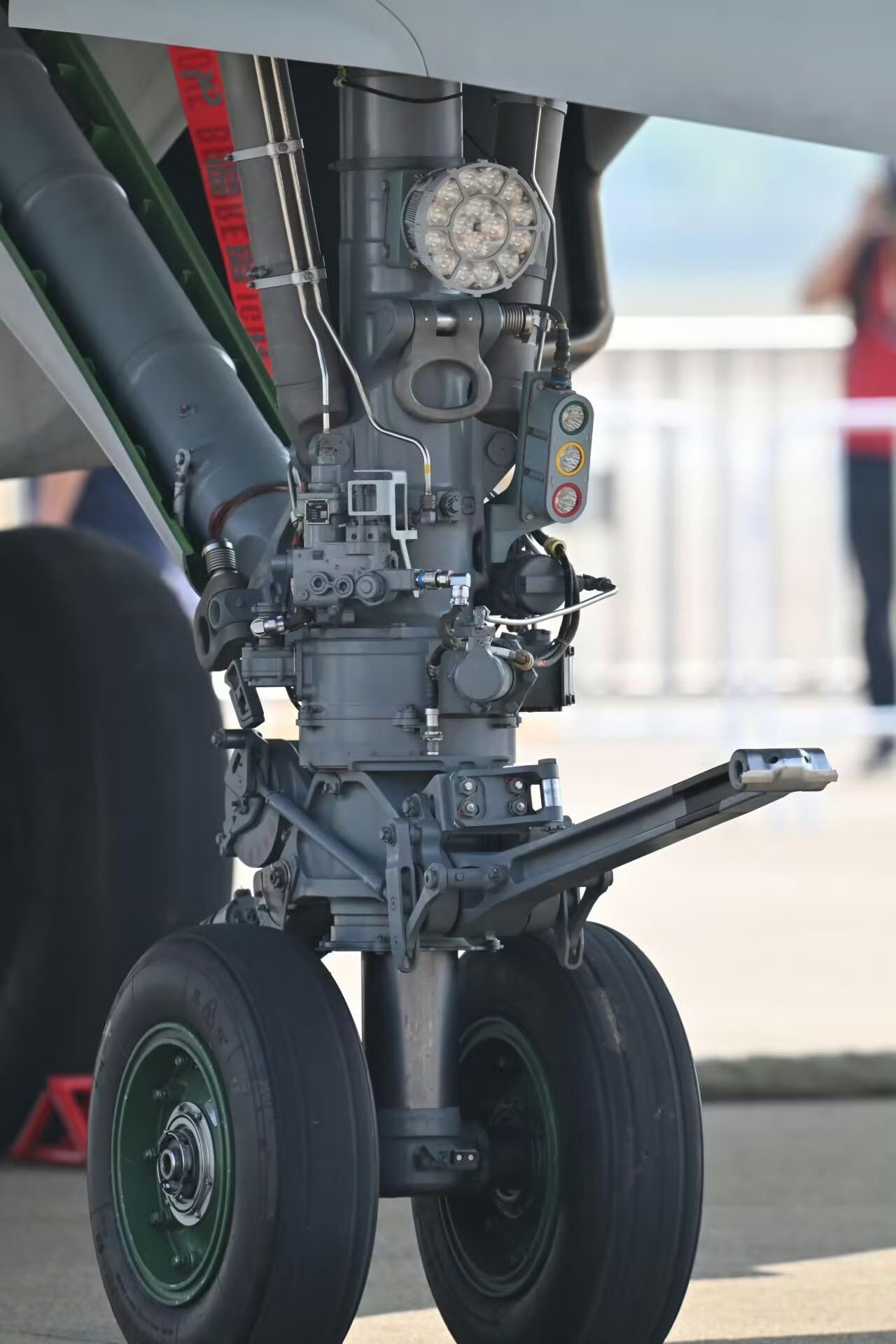In a major display of China’s growing naval aviation capabilities, the J-15T, a catapult-capable variant of the country’s first carrier-based fighter, landed at Zhuhai Jinwan Airport to participate in the upcoming 15th China International Aviation and Aerospace Exhibition, also known as the Zhuhai Airshow.
After landing at the airport on November 6, the aircraft, painted in light gray, was promptly attended to by maintenance teams from the Aviation Industry Corporation of China (AVIC), the country’s leading defense contractor and aircraft manufacturer.
This sighting has generated significant attention in the defense community, with images of the fighter quickly circulating on social media platforms. Users have suggested that this variant represents arguably the most advanced iteration of the Flanker series to date.
The biennial event, which will run from November 12 to 17, would mark the first time that the People’s Liberation Army Navy (PLAN) has showcased its aircraft at the prominent arms expo.
The J-15T is a new variant of the J-15 “Flying Shark,” a 4.5-generation fighter jet based on the Soviet Su-33. The existing J-15 models are currently deployed on China’s Liaoning and Shandong aircraft carriers, which utilize ski-jump ramps for takeoffs.
US Pushes “F-22, F-35 Fusion” To Indian Air Force Under Make In India; Lockheed Boss Meets PM Modi

However, the new variant J-15T has been designed for launch via a catapult, suggesting its future use aboard the Chinese Navy’s most advanced aircraft carrier, the Fujian.
Unlike the older carriers, the Fujian is equipped with an electromagnetic catapult launch system, allowing for more frequent and efficient aircraft launches.
The unveiling of the J-15T comes just days after the Chinese Navy released photographs of the fighter in action during a recent dual-carrier exercise in the South China Sea.
This exercise also saw the public debut of two other J-15 variants: the upgraded J-15B, a single-seat multirole fighter, and the J-15D, a two-seat electronic warfare jet. The jet’s debut also signifies the official declassification of the J-15T variant, which had previously been kept under.
A China military aviation researcher pointed out that the J-15T features slightly modified or reprofiled wingtip pylons for the PL-10 air-to-air missiles, unlike the configuration seen on the J-16.

J-15T Carrier-Capable Fighter
The J-15T, a variant of China’s J-15 carrier-based fighter, first appeared on social media in 2016. Since then, it has been undergoing ground-based test flights. The first prototype of the J-15T reportedly took to the skies for the first time in July 2016.
By November of the same year, it was reported that a J-15—possibly the second prototype of the J-15T—had successfully launched from a ground-based electromagnetic catapult facility at Huangdicun. This facility has been a testing ground for the J-15T’s capabilities.
In November 2020, a video surfaced on China’s Weibo social media platform. It featured three J-15 carrier fighters, two of which were identified as prototypes of the catapult-capable J-15T version.
These aircraft were painted in the operational gray colors of the People’s Liberation Army Navy (PLAN), and notably, they were powered by the domestically-produced WS-10 turbofan engines.
Visually, the J-15T can be easily distinguished from its predecessors by its reinforced nose landing gear, which features a longer and wider shock-absorbing oleo strut designed to withstand the increased stress of catapult launches.

Additionally, the J-15T is equipped with a launch bar to hook onto the catapult, further distinguishing it from the standard J-15.
The main landing gear has also been reinforced to support the demanding process of both catapult launches and arrested landings aboard aircraft carriers.
Unlike the J-15B, which takes off using the ski-jump on the Type 001 ‘Liaoning’ and Type 002 ‘Shandong’ carriers, the J-15T can be launched without relying on its own thrust, thanks to the electromagnetic catapult system. This ability makes the J-15T a more capable and efficient option for the PLAN’s future carriers.
Currently, J-15 is the only carrier-based fighter in active service with the PLAN. However, the J-35 stealth fighter is also being tested and is expected to enter serial production for future deployment aboard China’s aircraft carriers.
The aircraft’s debut at the air show is expected to be a major draw for spectators, especially with Russia’s most advanced fighter, the Sukhoi Su-57, also participating in the Zhuhai air show. Two Chinese stealth fighters, including the country’s newest stealth jet, the J-35, will also be showcased.
China is likely positioning the unveiling of these fighter jets as a significant leap in the capabilities of its aerial force, signaling a major advancement in national defense and enhancing its standing in the international defense arena.
- Contact the author at ashishmichel(at)gmail.com
- Follow EurAsian Times on Google News




